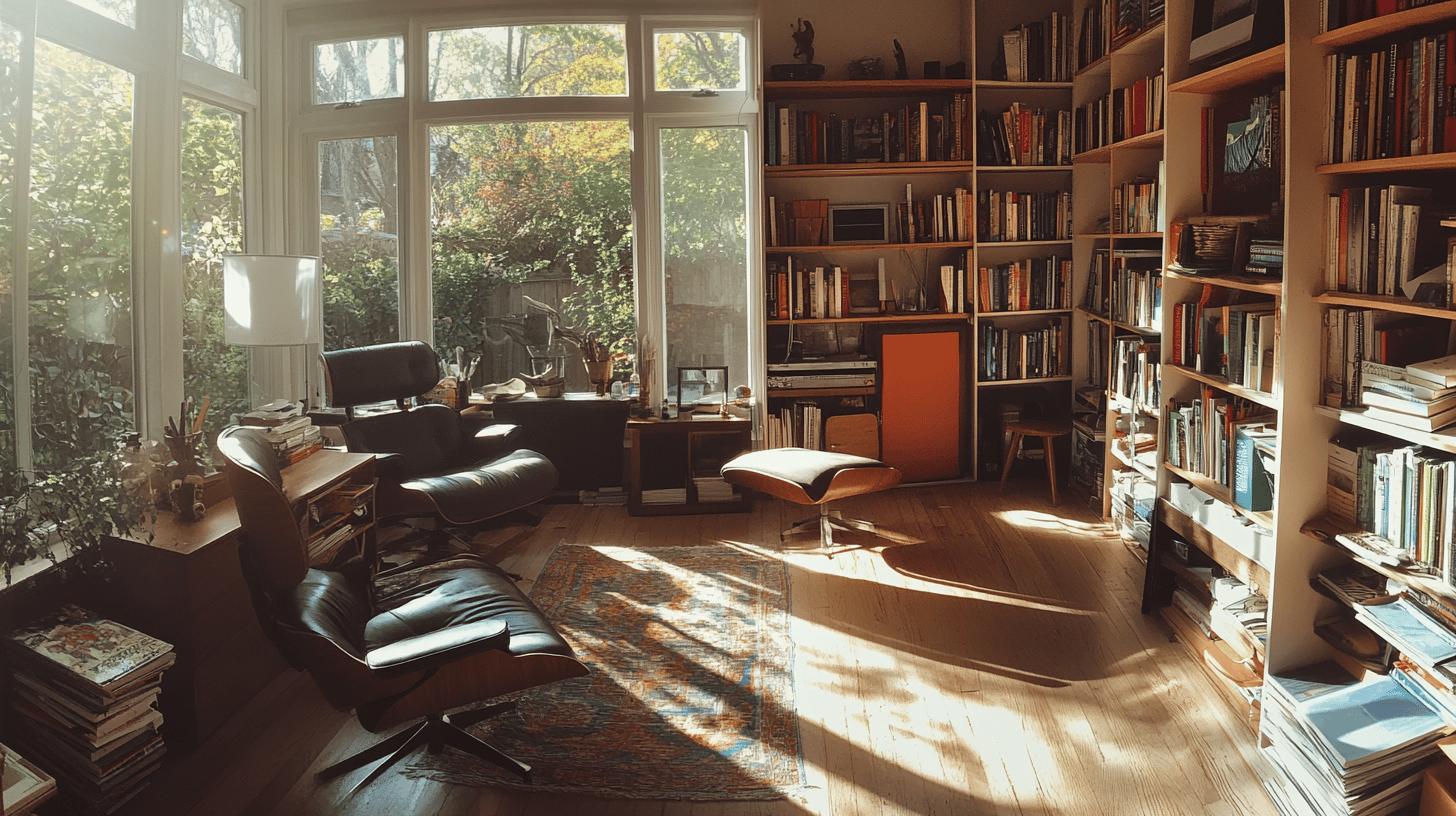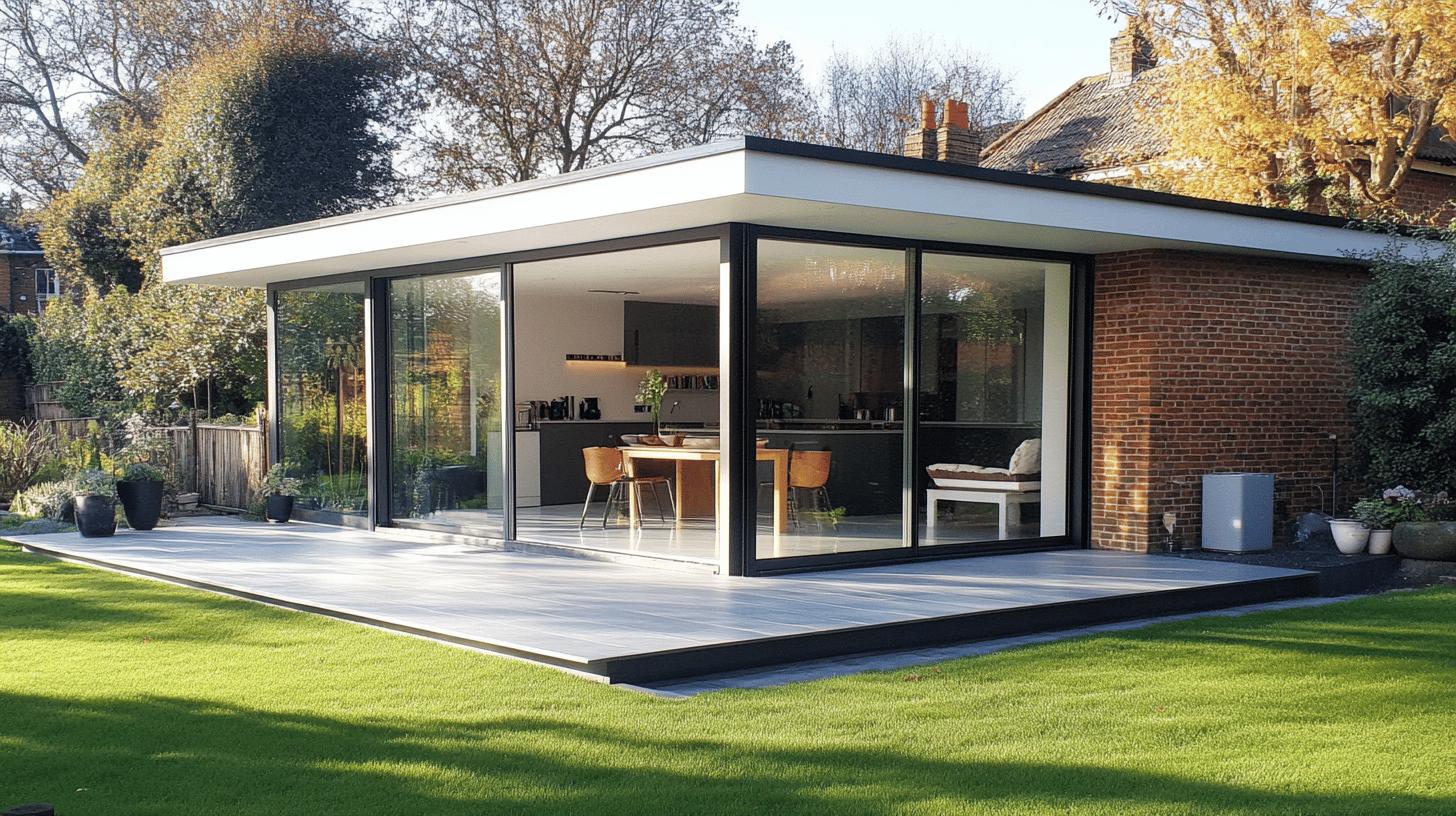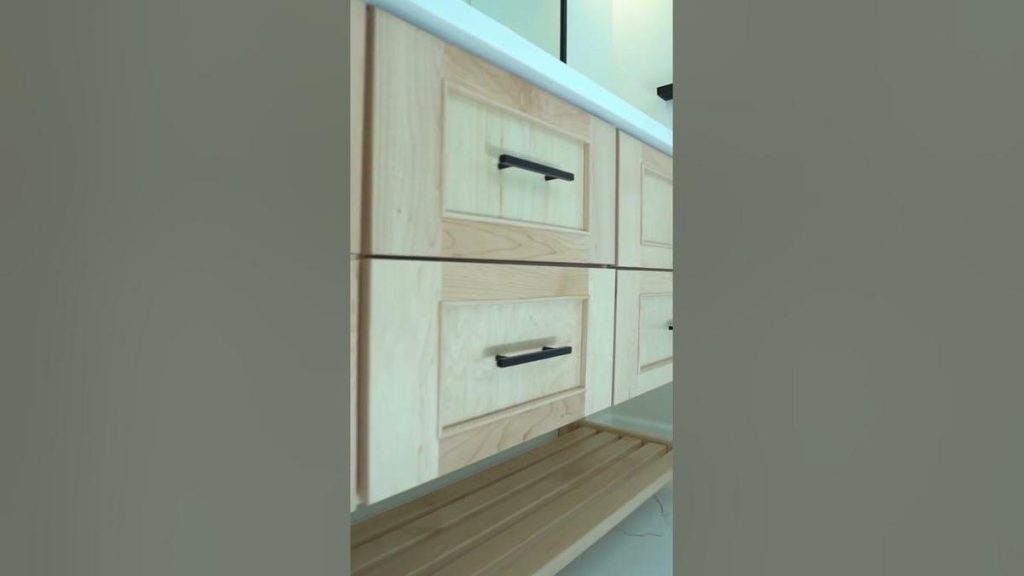Room extensions are transforming how homeowners experience their living spaces, seamlessly blending the indoors with the outdoors and maximizing natural light while enhancing functionality. Integrating modern designs into home extensions drives innovation, creating not just additional spaces but areas that reflect personal style and improve everyday living. With the emphasis on creative solutions, extensions like contemporary glass designs and open-plan layouts have become popular, offering elegant transitions and optimizing the flow between indoor and outdoor environments. This article will explore innovative room extensions ideas aimed at enhancing modern living by combining stylish aesthetics with practical benefits.
Key Takeaways for Room Extensions Ideas
Maximizing Natural Light: Incorporating large glass elements like bi-fold doors, skylights, and floor-to-ceiling windows creates seamless indoor-outdoor transitions and reduces reliance on artificial lighting.
Open-Plan Layouts: Removing unnecessary walls fosters connectivity, enhances space flow, and supports modern living with versatile arrangements for gatherings and activities.
Budget-Friendly Solutions: Small room extensions and innovative layouts, like built-in storage or multi-functional furniture, offer cost-effective ways to enhance functionality without major structural changes.
Space Optimization: Utilizing vertical space, reflective surfaces, and light colors can make compact extensions feel larger while maintaining a stylish appearance.
Seamless Integration: Matching materials, architectural styles, and finishes ensures a cohesive look when merging new extensions with existing structures.
Eco-Friendly Design: Incorporating sustainable materials and energy-efficient features, such as solar panels or insulated glass, enhances functionality while reducing environmental impact.
Professional Guidance: Expert designers and builders are crucial for planning, material selection, and ensuring extensions comply with local building codes and regulations.
Increased Home Value: Thoughtfully designed extensions, whether small or expansive, improve living conditions and boost property resale potential.
Innovative Features: Adding unique elements like retractable walls, garden-facing extensions, or outdoor kitchens enhances both usability and aesthetic appeal.
Customized Design: Personalizing extensions to align with homeowners’ styles and needs, from contemporary glass rooms to rustic sunrooms, ensures satisfaction and long-term utility.
Creative Room Extensions Ideas for Modern Living
Creativity in room extensions is pivotal in transforming traditional spaces into modern havens that cater to contemporary lifestyles. Modern room extension designs emphasize the integration of aesthetics and functionality, capitalizing on innovative concepts that redefine living areas. By embracing creative room extension solutions, homeowners can enhance their living environments to be both stylish and efficient. The focus on modern designs often revolves around maximizing light, space, and connectivity within the home, ensuring that each extension serves a purposeful role in daily life.
One of the most impactful room extensions ideas is the incorporation of glass elements, which offer both visual and functional benefits. Glass extensions can seamlessly blend indoor and outdoor spaces, creating a fluid transition that enhances the perception of space. These designs often include large bi-fold doors or floor-to-ceiling windows that invite natural light into the home, thereby reducing the need for artificial lighting. Open-plan layouts are another popular choice, as they remove unnecessary barriers, promoting a sense of openness and communication throughout the home. Such designs not only cater to modern aesthetics but also support versatile living arrangements suitable for various activities and gatherings.
Integrating these modern extension ideas into existing structures requires careful planning and design expertise. It is essential to consider the architectural style of the current home to ensure a cohesive look when adding new extensions. Professional design services play a crucial role in achieving this harmony, as they offer insights into material selection, structural integrity, and aesthetic alignment. Additionally, thoughtful planning can help optimize the functionality of the space, ensuring that new extensions are not only visually appealing but also practical for long-term use.

Cost Considerations for Room Extensions
Understanding the financial aspects of room extensions is crucial for any homeowner looking to expand their living space. The cost of house extensions can range from $20,000 for simple projects to over $100,000 for more extensive designs. These costs are influenced by multiple factors, including the size of the extension, the materials used, and the complexity of the design. A larger extension with high-quality materials and intricate architectural elements will naturally cost more than a smaller, straightforward project. Homeowners should consider these variables carefully to develop a realistic budget that aligns with their vision for the expansion.
Several factors contribute to the overall cost of a room extension:
- Materials: High-end finishes and custom features will increase costs.
- Labor: Skilled labor can be a significant expense, especially for complex designs.
- Design Complexity: More intricate designs require more time and resources.
- Permits and Regulations: Compliance with local building codes may add to the expense.
- Site Preparation: Existing site conditions can affect costs, such as demolition or grading.
To manage these costs effectively, homeowners should prioritize budget planning and use cost calculators to estimate expenses accurately. Engaging with experienced contractors who can provide detailed quotes and timelines is essential for staying on track financially. Additionally, exploring different design options and materials can help find cost-effective solutions without compromising on quality or aesthetics. This proactive approach ensures that the room extension project enhances the home’s value while staying within financial limits.
Maximizing Space with Smart Room Extensions

Space constraints present a significant challenge when planning room extensions, particularly in urban areas where real estate is at a premium. The need for effective space utilization becomes paramount, as homeowners seek to extend their living areas without compromising on functionality or aesthetics. Compact room extension ideas are gaining popularity as they offer innovative solutions to make every square foot count. The goal is to create spacious, organized environments that cater to modern lifestyles while remaining within the spatial limitations of existing properties.
To achieve this, consider implementing the following smart solutions:
Multi-functional furniture that serves more than one purpose, such as sofa beds or extendable dining tables.
Built-in storage solutions to minimize clutter and make use of vertical space, like bookshelves or under-stair storage.
Open-plan layouts to enhance the flow of space and create a sense of openness.
Use of light colors and mirrors to make rooms appear larger and more inviting.
Integrating sliding or pocket doors to save space compared to traditional hinged doors.
When planning and designing extensions for effective space use, it’s crucial to focus on the purpose and functionality of the new area. Begin by evaluating the existing space and identifying key areas where improvements can be made. Engage with professional designers who can offer insights into innovative layouts and material choices that enhance the usability of the extension. By prioritizing these elements, homeowners can create extensions that not only increase living space but also improve the overall quality of life.
Integrating Room Extensions with Existing Structures
Maintaining design consistency between room extensions and existing structures is crucial for creating a harmonious living space. A seamless integration enhances the aesthetic appeal and functionality of the home, making it feel more cohesive and inviting. To achieve this, it’s essential to match the extension’s style and materials with those of the existing structure. This includes replicating architectural details, using similar color palettes, and selecting compatible materials such as brick, wood, or metal. By doing so, the extension appears as a natural continuation of the home, rather than an afterthought.
When planning an extension, obtaining the necessary planning permissions is a vital step to ensure compliance with local building regulations. This process involves checking with local authorities to understand the specific requirements and restrictions that may apply to the project. Additionally, ensuring structural integrity is paramount; engaging professionals to assess the foundation, load-bearing walls, and other critical elements can prevent future issues. By focusing on these aspects, homeowners can confidently embark on their extension projects, knowing they are enhancing their living space in a sustainable and legally compliant manner.
Kitchen and Dining Room Extension Inspirations
In recent years, kitchen extension ideas have evolved to embrace open-plan layouts and the integration of natural light. Homeowners are increasingly opting for designs that merge the kitchen with adjacent living or dining areas, creating a cohesive space that encourages interaction and enhances the overall flow of the home. The use of large glass doors and skylights is a popular choice, as these features maximize natural light and establish a seamless connection between indoor and outdoor environments. This approach not only elevates the kitchen’s aesthetic appeal but also promotes energy efficiency by reducing the reliance on artificial lighting.
When considering dining room extension ideas, the focus is often on creating spaces that are both functional and stylish. One innovative concept is the incorporation of bi-fold doors, which can be fully opened to extend the dining area into the garden, perfect for hosting gatherings or enjoying meals with a scenic view. Another trend is the use of multi-functional furniture, such as extendable dining tables or built-in bench seating with hidden storage, which optimizes space and provides a practical solution for smaller areas. By integrating these elements, dining room extensions can offer flexible layouts that cater to various occasions and needs, enhancing the dining experience.
Practical considerations are crucial when planning kitchen and dining room extensions. Structural changes, such as removing interior walls, may be necessary to achieve the desired open-plan layout, which requires careful planning to ensure stability and safety. Additionally, the alignment of new extensions with existing architectural styles is important to maintain a consistent look throughout the home. Engaging with professional designers and architects can provide valuable insights into material selection, structural integrity, and efficient space utilization, ensuring that the extension not only enhances the home’s functionality but also adds long-term value.
Outdoor-Indoor Extension Concepts

Connecting indoor extensions with garden spaces offers numerous benefits, enhancing both the aesthetic and functional aspects of a home. By integrating these areas, homeowners can create a continuous flow between indoor and outdoor environments, making spaces feel larger and more cohesive. This approach not only improves the visual appeal of a home but also expands the usable space for activities such as dining and entertaining. Moreover, a seamless transition to garden spaces encourages greater interaction with nature, promoting a sense of tranquility and well-being. These designs often capitalize on the natural beauty of the surrounding landscape, creating an inviting atmosphere that blurs the lines between indoor comfort and outdoor serenity.
To achieve this integration, consider incorporating specific design features that facilitate a fluid connection between indoor and outdoor areas:
Bi-fold doors that can be fully opened to merge indoor spaces with the garden.
Skylights to bring in natural sunlight and reduce reliance on artificial lighting.
Large windows that frame garden views and enhance the perception of space.
Sliding glass doors for unobstructed views and easy access to outdoor areas.
Verandas or covered patios that extend living areas into the garden.
Maximizing natural light and enhancing views are key strategies for successful outdoor-indoor extensions. Positioning windows and doors to capture optimal sunlight not only brightens interiors but also reduces energy costs. Incorporating reflective surfaces and light-colored finishes can amplify the effect of natural light, creating a warm and inviting ambiance. By strategically placing furniture and decor, homeowners can further emphasize garden views, ensuring that the beauty of the outdoors is a focal point within the home.
Small Room Extensions: Big Impact
Small room extensions offer a transformative approach to enhancing living spaces, making them ideal for homeowners seeking to maximize the utility of limited areas. These compact extensions can significantly increase the functional space in a home, providing much-needed flexibility and improved living conditions. Whether it’s adding a small bathroom to increase convenience or expanding a kitchen for better accessibility, small extensions can make a noticeable difference in daily life. They are cost-effective and often require fewer resources than larger projects, making them an attractive option for those working within budget constraints.
To ensure that small room extensions achieve their full potential, consider implementing strategies that focus on maximizing impact. Efficient layouts are crucial; using open-plan designs can create a sense of spaciousness without expanding the physical footprint. Clever storage solutions, such as built-in cabinets and shelves, help in maintaining organization and reduce clutter. Selecting the right design elements, like light colors and reflective surfaces, can enhance natural light and make spaces appear larger. By carefully planning and utilizing these strategies, small extensions can significantly improve both the functionality and aesthetic appeal of a home.
FAQs for Room Extensions Ideas
What are some ideas for room extensions in small spaces?
Room extensions for small spaces can benefit from innovative layouts and designs to maximize the available area. Consider these ideas:
- Utilize vertical space: Incorporate mezzanines or lofts to add extra floor space without expanding the footprint of your home.
- Implement open-plan designs: Create a sense of spaciousness by removing internal walls and adopting an open-plan layout. This allows for a more flexible use of space and enhances natural light flow.
- Incorporate built-in storage: Maximize functionality by integrating built-in storage solutions, such as shelves, cupboards, and drawers. This helps to keep the space organized and clutter-free.
How can I extend a room on a budget?
Cost-effective room extensions involve careful planning and material selection. Here are some strategies to consider:
- Use cost-efficient materials: Opt for prefabricated panels or readily available materials to reduce construction costs.
- Opt for simple designs: Choose simple designs that minimize structural changes and complexity, which can help to lower labor and material expenses.
- Reuse existing structures and materials: Where possible, reuse existing structures and materials to minimize waste and reduce the need for new purchases.
What type of extension adds the most value to a house?
While the value added by an extension depends on various factors, including location and market conditions, certain types generally tend to increase property value significantly:
- Kitchen and dining room expansions: Creating a spacious and modern kitchen with an adjoining dining area is a popular choice that often appeals to potential buyers.
- Additional bedrooms or bathrooms: Adding extra bedrooms or bathrooms can significantly enhance the functionality and appeal of your home, especially for families.
- Open-plan living spaces with modern amenities: Creating open-plan living spaces with modern amenities, such as large windows and integrated appliances, can significantly increase the desirability and value of your property.
Is it possible to extend a room without planning permission?
In many cases, house extensions can be carried out under permitted development rights, which means you won’t need planning permission. However, it’s essential to consult with your local planning authority or home extension specialists to ensure compliance with regulations. Permitted development rights typically have limitations on the size and type of extension allowed, so it’s crucial to check the specific rules in your area.
What are the disadvantages of home extensions?
While home extensions offer numerous benefits, it’s important to be aware of potential challenges:
- Increased cost and time investment: Extensions can be a significant financial investment and may take longer to complete than anticipated8.
- Potential planning permission and regulation hurdles: Obtaining planning permission and complying with building regulations can be a complex and time-consuming process.
- Disruption to daily life during construction: Construction work can be disruptive to your daily routine and may involve noise, dust, and temporary limitations on your living space.
How to extend a living room?
Extending a living room can involve various approaches, such as rear extensions, side extensions, or even incorporating a conservatory. Consider factors like desired space, natural light, and connection to the outdoors when choosing the best option for your needs and budget.
What is the cheapest type of extension to build?
The cheapest type of extension often involves utilizing existing space, such as converting a garage, basement, or attic. Bump-out additions or small conservatories can also be cost-effective ways to add space without major structural changes.
How do I add an extension to my house?
Adding an extension involves careful planning, design, and construction. Start by assessing your needs, consulting with architects and builders, obtaining necessary permissions, and ensuring compliance with building regulations.
Can I extend my house at the back?
Yes, rear extensions are a common way to expand living spaces. They can create larger kitchens, dining areas, or living rooms that open up to the garden. Ensure compliance with local regulations and consider factors like natural light and garden space.
How much does it cost to add 1000 square feet to a house?
Adding 1000 square feet can cost approximately $80,000 to $200,000, depending on factors like design complexity, materials used, and labor costs. Second-story additions often fall within this range.
What is the cheapest way to build an extra room?
The cheapest way often involves converting existing spaces like attics, basements, or garages. This minimizes structural work and utilizes existing infrastructure.
What extension adds the most value?
Extensions that typically add the most value include extra bedrooms, especially with en-suites, larger kitchens, and loft conversions. These additions enhance functionality and appeal to potential buyers.
How much does it cost to build a 1000 sq ft extension?
Building a 1000 sq ft extension can cost between $125,000 and $250,000, depending on factors like design complexity, materials, and labor costs. Second-story additions often fall within this range.
What is the least damaging type of extension?
In terms of hair extensions, clip-in extensions are considered the least damaging as they are temporary and don’t require adhesives or heat. For house extensions, consider those with minimal structural changes or that utilize existing spaces .
How much does it cost to add a 12×12 room to a house?
Adding a 12×12 room (144 sq ft) typically costs between $18,000 and $36,000, depending on factors like materials, finishes, and labor costs.
Can I just build an extension?
While permitted development rights allow for some extensions without planning permission, it’s crucial to check local regulations and obtain necessary approvals before starting any construction.
What is a bump-out addition?
A bump-out addition extends an existing room by a small amount, typically 2-15 feet deep. It’s a cost-effective way to add space without major structural changes.
Conclusion
Exploring various creative room extension ideas showcases the potential to enhance modern living spaces with innovative designs. From glass and open-plan extensions to seamless indoor-outdoor transitions, these solutions emphasize the importance of strategic planning and professional guidance.
Cost considerations reveal that budgeting wisely, while focusing on materials and labor, can yield functional extensions without financial strain.
Smart space utilization, integrating new designs with existing structures, and leveraging kitchen-dining inspirations illustrate the transformative power of room extensions.
Lastly, even small extensions can significantly impact home functionality and style, making thoughtful room extensions ideas crucial for a cohesive and enriched living environment.
Start Your Northern Virginia Home Addition Remodeling Journey Today
Remodel your home with Elegant Kitchen and Bath, offering various services including home remodeling. Discover our unique services via our projects.
Elegant Kitchen and Bath, offers kitchen remodeling, bathroom remodeling, basement remodeling, and home addition remodeling services across a broad area, including
Herndon, Chantilly, Centreville, Reston, Sterling, GreatFalls, Ashburn, Fairfax, McLean, Manassas, Haymarket, Burke, Vienna, Falls Church, Annandale, Springfield, Alexandria and Arlington.
Ready to transform your home with a licensed contractor?
Visit Elegant Kitchen and Bath to start your journey toward your modern home today.


